Take a walk in our shoes (or boots!) and read the daily highlights of a trip aboard the Snow Goose from Gustavus to Juneau, Alaska. Click here to learn more about our 2019 trips along this route!
Day 1:
Snow Goose crew welcomed everyone aboard the boat as we always do, with hot coffee, tea and a late-morning snack (homemade blueberry muffins, freshly baked cookies and fresh fruit). Everyone settled in to their cozy cabins as the captain and first mate wasted no time getting off the dock.

We ate a lunch of Thai carrot soup and quinoa pilaf underway, while keeping an eye out for curious sea otters bobbing along in the calm seas. Less than three hours had passed and we spotted our first whale! It was a humpback feeding along the shore, below the steep granite walls that extend deep into the sea.
Once anchored in Geikie Inlet we set out in kayaks, secretly hoping the whale would come pay us a visit. As we became familiarized with our swift and sleek vessels, we also settled into the rhythm of a trip in Alaska and began to take note of the abundance of wildlife surrounding us. Before long the warm lights of the boat called us home, so we  paddled back toward our mothership for our first dinner aboard the Snow Goose.
paddled back toward our mothership for our first dinner aboard the Snow Goose.
That night we feasted on furikake crusted Wild Alaskan Sockeye salmon, fried rice with miso butter, sugar snap peas, and a fresh green salad.
Day 2:
Woke up to a Humpback lunge-feeding right outside our front door. It’s good to be back in Alaska! Had a morning navigational update over charts and coffee, and pulled anchor.
Further north, a hike up the accurately named Gloomy Knob gave us a chance to use the Snow Goose naturalist library to identify an array of Alaskan wildflowers.
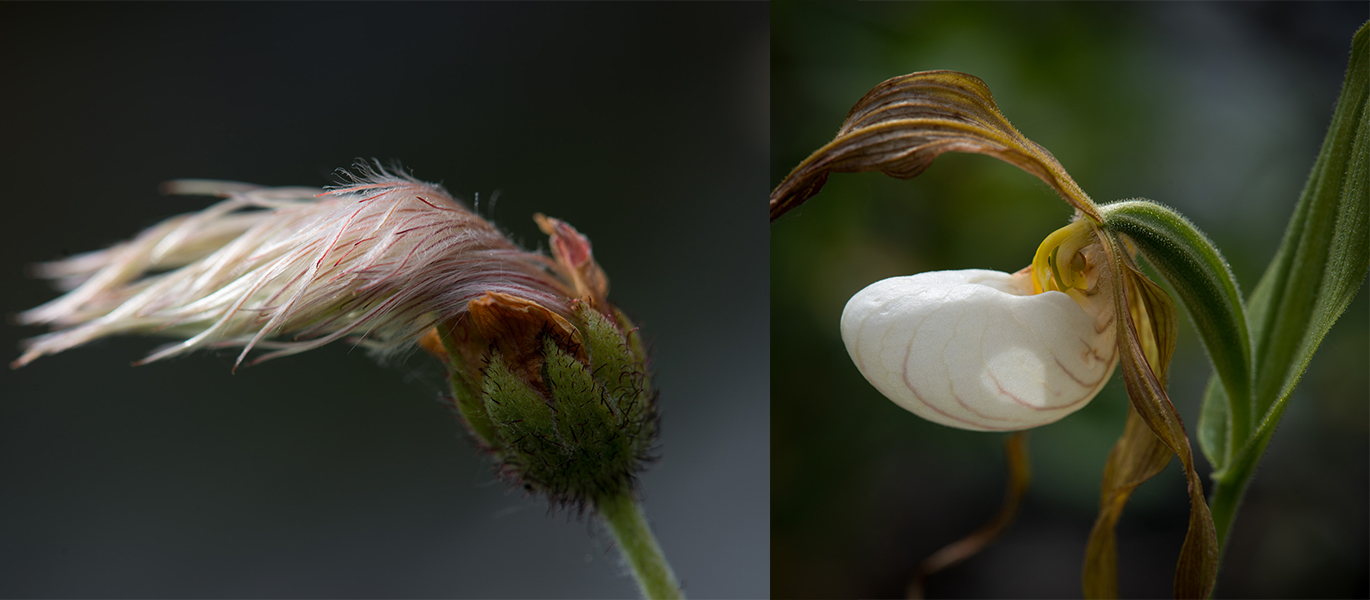
Later, we anchored in Blue Mouse Cove and went for a 3-4 mile paddle where we were surrounded by a family of sea otters. The colossal peaks of the Fairweather Range hovered in the distance.

Day 3:
Today we enjoyed lunch while viewing the Johns Hopkins Glacier.

We kept our distance due to the harbor seals that were pupping near the face of the glacier. Seals give birth on floating icebergs to protect their young from predators. It’s a good move, as seals and iceberg formations look surprisingly similar.
The tide was low so we kayaked along the intertidal zone to our anchorage in Reid Inlet. We saw pairs of oyster catchers guarding their nests on the rocks and a raucous flock of surf scoters along the way.
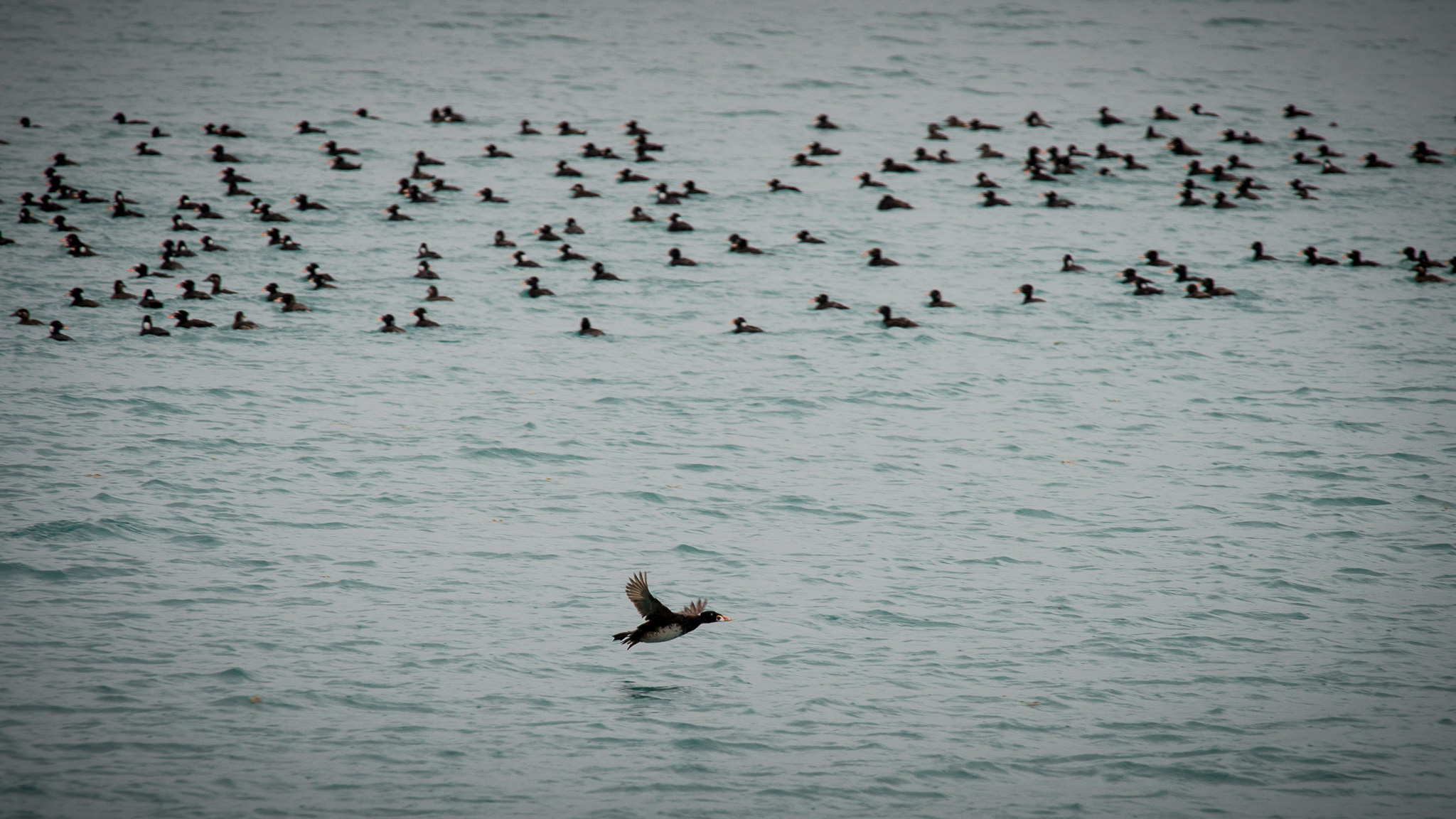
Day 4:
As the Snow Goose ventures further north into Glacier Bay, the changes in the landscape are evident. Fewer trees, towering granite peaks and icebergs drifting in the turquoise waters as far as the eye can see. We took a morning hike along the terminus of the Reid Glacier and had breakfast underway while we moved on to the next stop.
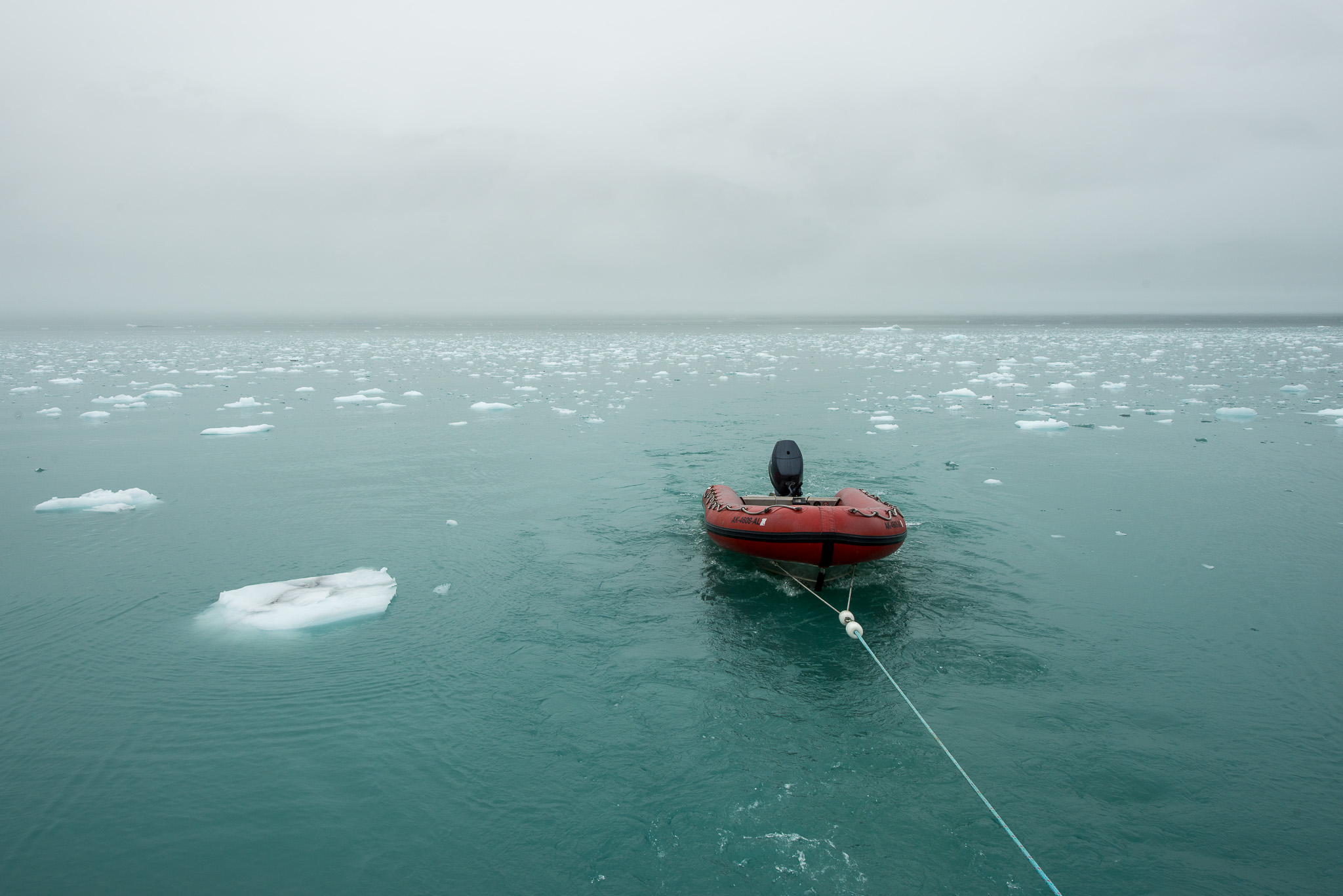
Later, the group got the full Glacier Bay experience while kayaking at Margerie Glacier: gigantic slabs of ice calving off the face of the glacier and disappearing into the water with an echoing crash. A huge colony of cormorants and kittiwake gulls nested on the sheer granite walls adjacent to the glacier.


It was an incredible day, immersed deep in the inlets of Glacier Bay. The icing on the cake? Homemade chocolate mousse for dessert!
Day 5:
Breakfast was served underway as we cruised to our next stop: a hike-about along the shores of a river of icebergs, floating peacefully yet swiftly into the sea. Some folks in our crew were slightly weary of running into a bear; just yesterday we cruised along a similar shoreline, watching a brown bear overturning rocks with his giant claws as he visited the intertidal lunch buffet.

In order to warn any local bears of our presence on our hike, we made up songs to sing loudly as we marched through the tall shrubs. We ended at a group of angular glacial ice formations, abandoned on the sandy beach by the high tide. We identified the bright purple flowers along the way as fireweed, well known in the ethnobotany world for its many medicinal uses. We saw no bears that day, and returned to the Goose in our trusty skiff, greeted with hot chocolate and another delicious lunch.
loudly as we marched through the tall shrubs. We ended at a group of angular glacial ice formations, abandoned on the sandy beach by the high tide. We identified the bright purple flowers along the way as fireweed, well known in the ethnobotany world for its many medicinal uses. We saw no bears that day, and returned to the Goose in our trusty skiff, greeted with hot chocolate and another delicious lunch.
Day 6:
The group took a mid-day break from cruising to circumnavigate South Marble Island, home to an important colony of pigeon guillemots, on kayaks. In 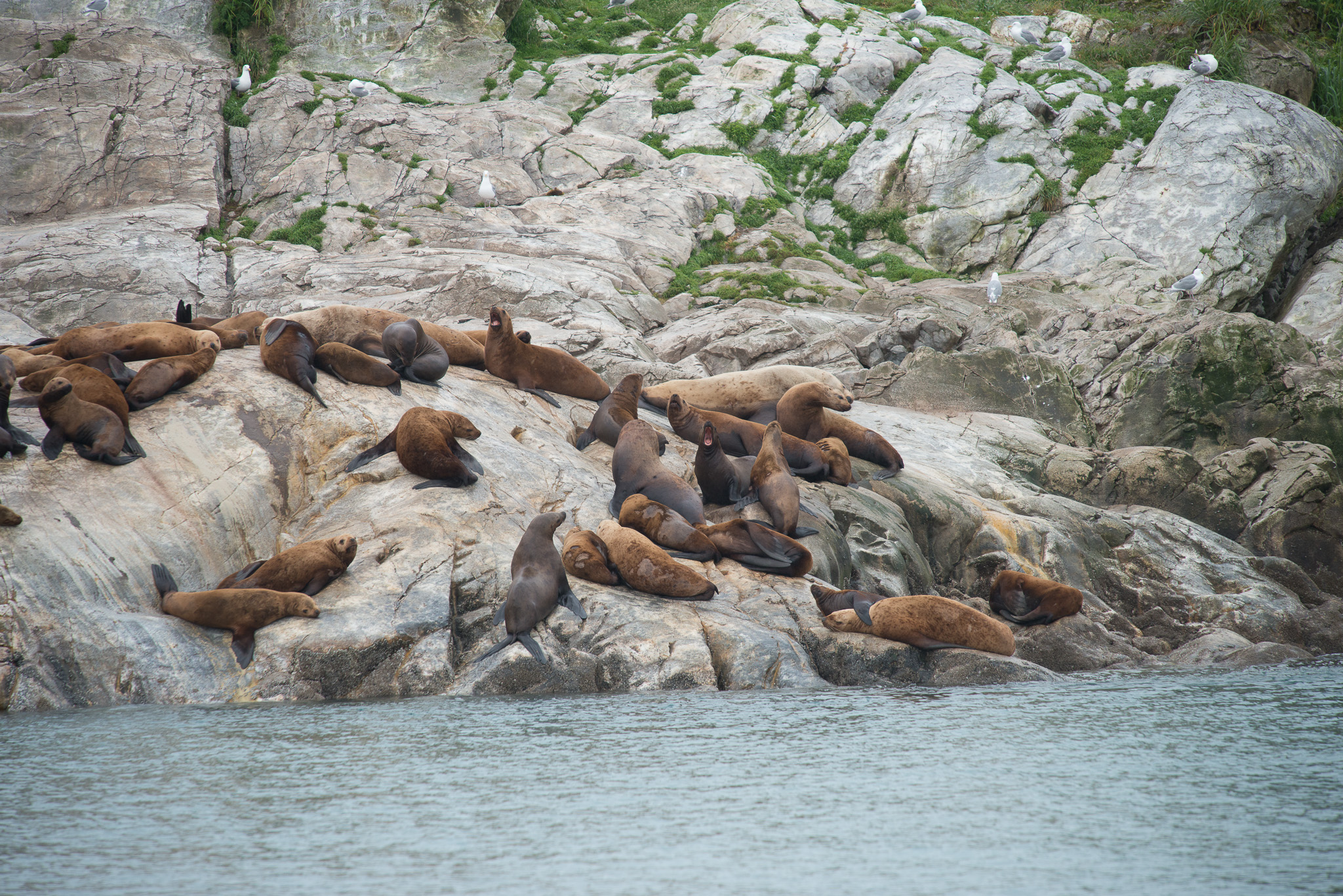 stark contrast to the dainty seabirds (weighing in at a whopping 1.1 pounds on average), a group of stellar sea lions also call Marble Island home. You can see, hear, and smell the sea lions from a considerable distance. As their belches and barks echoed over the water, we paddled faster to get up-wind.
stark contrast to the dainty seabirds (weighing in at a whopping 1.1 pounds on average), a group of stellar sea lions also call Marble Island home. You can see, hear, and smell the sea lions from a considerable distance. As their belches and barks echoed over the water, we paddled faster to get up-wind.
Day 7:
Cruising out of Glacier Bay National Park and Preserve, everyone once again begins to notice differences in the landscape, the vegetation and the color of the water. As we enter Icy Strait our eyes are trained on the horizon, and eventually we see the telltale sign of a humpback whale. The health and happiness of wildlife is our number one priority, so the captain shut off our motors and allowed the Goose to drift in the current at a safe distance. It turns out to be a whole group of whales; we see them surfacing before each deep dive, lunge feeding with their gigantic jaws wide open, and slapping their pectoral fins and flukes on the surface of the water to make a thunderous clap.
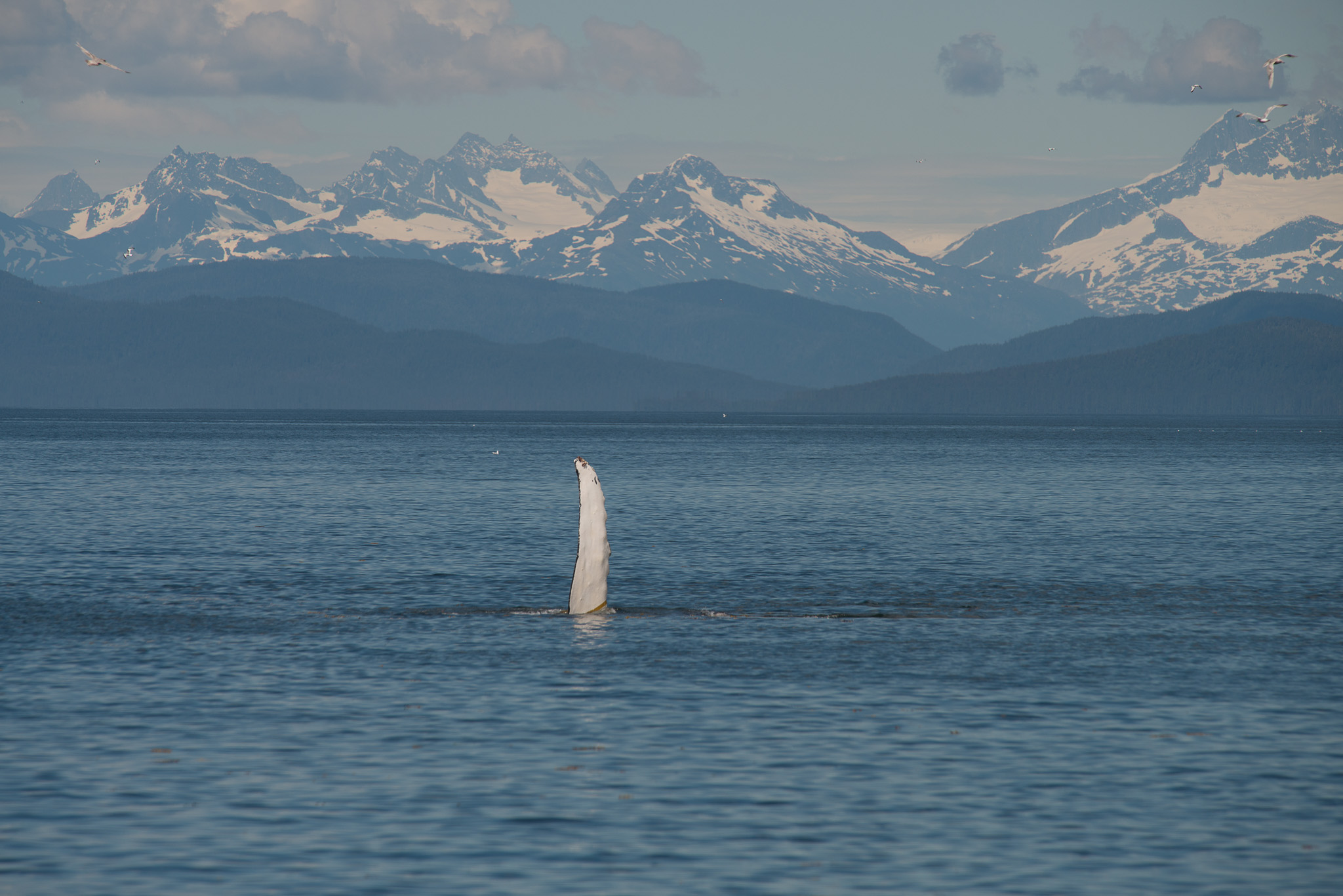
The whales stay, so we stay. The group opts to push lunch back and in order to tide us over, we have a mid-day snack on the deck. The sun has decided to show itself from behind the clouds and there’s no where else we’d rather be. As other boats cruise by without even a glance at the whales, we suppose they must be in a hurry. For the Snow Goose crew, that couldn’t be further from the truth.

Day 8:
As they say, all good things must come to an end. We have our final breakfast aboard the Snow Goose and head to port at Auk Bay in Juneau. While it is exciting, in a way, to get back to ‘civilization’, contact our loved ones, and start uploading our best photos from the trip, we do our best to take our time getting back to reality. Southeast Alaska has provided a rare experience, beyond even the wildlife and glaciers; it has given us the opportunity to slow down, observe, and soak in the world around us.




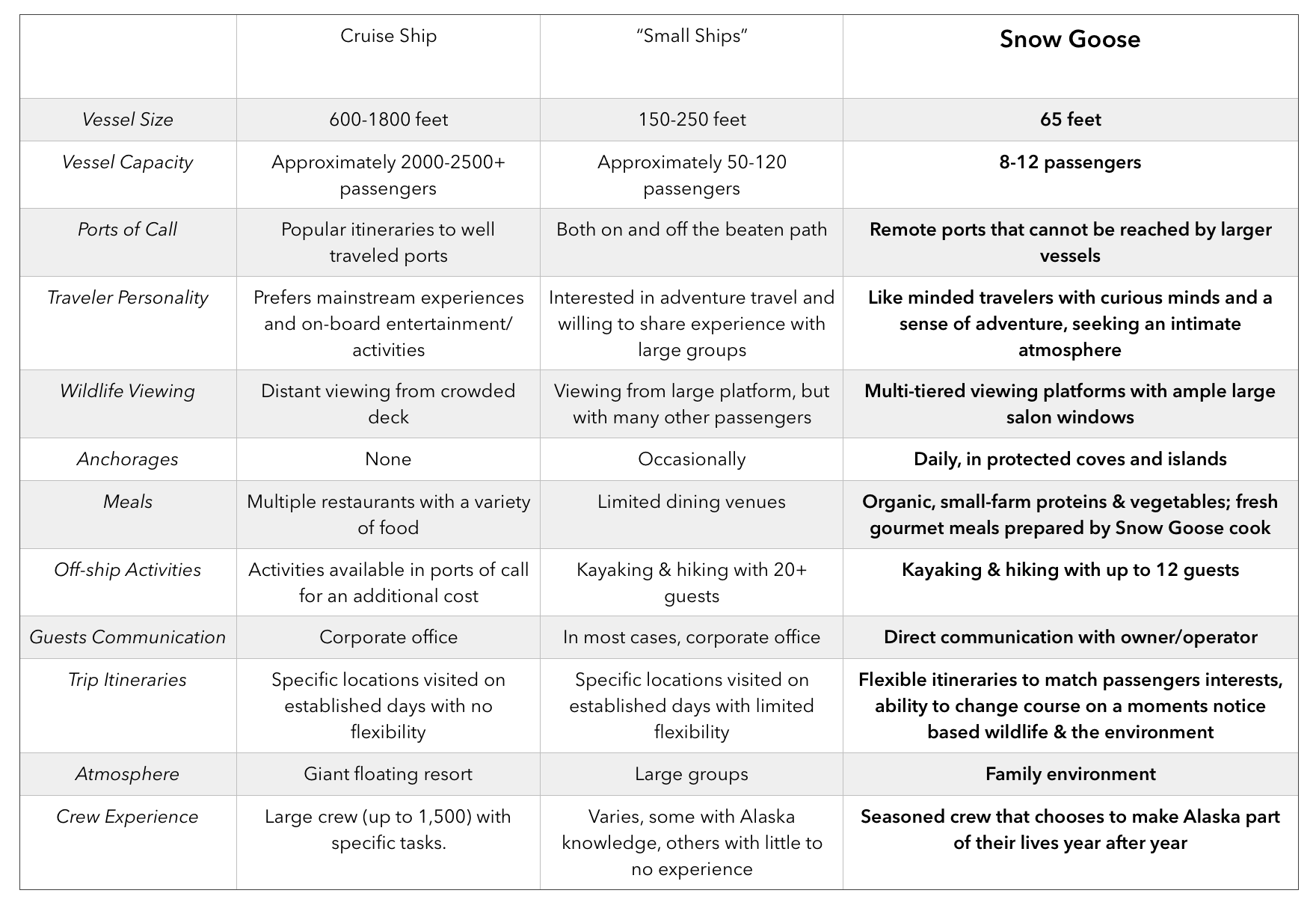

 paddled back toward our mothership for our first dinner aboard the Snow Goose.
paddled back toward our mothership for our first dinner aboard the Snow Goose.







 loudly as we marched through the tall shrubs. We ended at a group of angular glacial ice formations, abandoned on the sandy beach by the high tide. We identified the bright purple flowers along the way as fireweed, well known in the ethnobotany world for its many medicinal uses. We saw no bears that day, and returned to the Goose in our trusty skiff, greeted with hot chocolate and another delicious lunch.
loudly as we marched through the tall shrubs. We ended at a group of angular glacial ice formations, abandoned on the sandy beach by the high tide. We identified the bright purple flowers along the way as fireweed, well known in the ethnobotany world for its many medicinal uses. We saw no bears that day, and returned to the Goose in our trusty skiff, greeted with hot chocolate and another delicious lunch. stark contrast to the dainty seabirds (weighing in at a whopping 1.1 pounds on average), a group of stellar sea lions also call Marble Island home. You can see, hear, and smell the sea lions from a considerable distance. As their belches and barks echoed over the water, we paddled faster to get up-wind.
stark contrast to the dainty seabirds (weighing in at a whopping 1.1 pounds on average), a group of stellar sea lions also call Marble Island home. You can see, hear, and smell the sea lions from a considerable distance. As their belches and barks echoed over the water, we paddled faster to get up-wind.




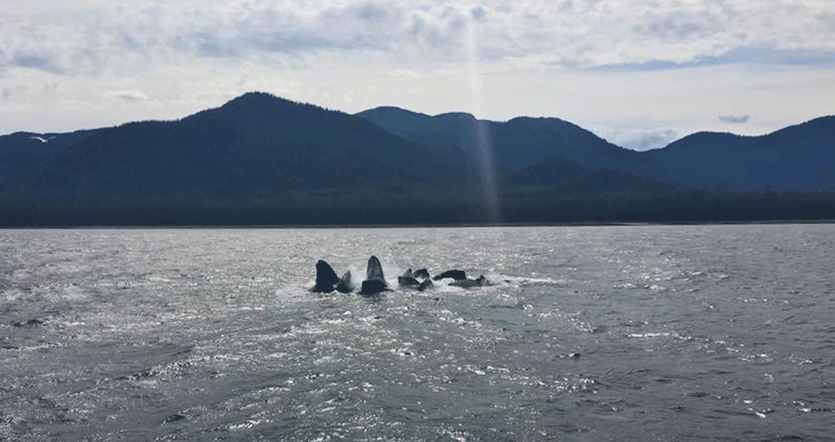











 opportunity for a flexible schedule. Downtime is essential for that moment when we spot humpback whales bubble-net feeding, or a family of brown bears ambling down the shoreline. Taking time to observe wildlife is one of the best parts of exploring Alaska aboard a small ship.
opportunity for a flexible schedule. Downtime is essential for that moment when we spot humpback whales bubble-net feeding, or a family of brown bears ambling down the shoreline. Taking time to observe wildlife is one of the best parts of exploring Alaska aboard a small ship.